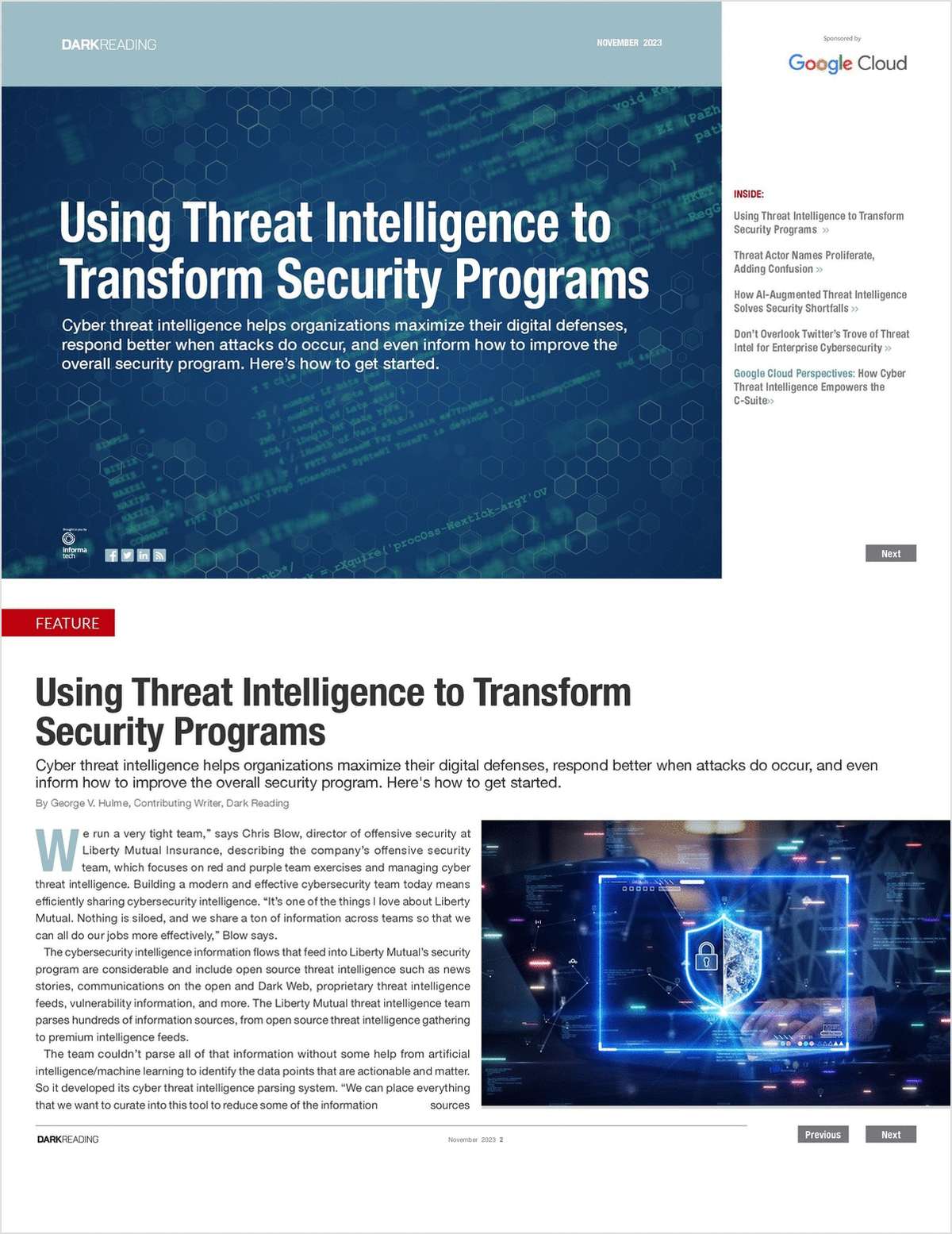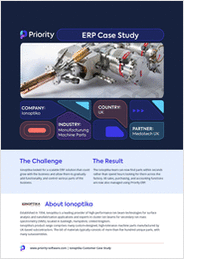Research Library
The top resource for free research, white papers, reports, case studies, magazines, and eBooks.
- Information Technology
- Data Infrastructure
- Data Tools
- Desktops, Laptops and OS
- Chip Sets
- Collaboration Tools
- Desktop Systems - PCs
- Email Client
- Embedded Systems
- Hardware and Periferals
- Laptops
- Linux - Open Source
- Mac OS
- Memory Components
- Mobile Devices
- Presentation Software
- Processors
- Spreadsheets
- Thin Clients
- Upgrades and Migration
- Windows 7
- Windows Vista
- Windows XP
- Word Processing
- Workstations
- Enterprise Applications
- IT Infrastructure
- IT Management
- Networking and Communications
- Bluetooth
- DSL
- GPS
- GSM
- Industry Standard Protocols
- LAN - WAN
- Management
- Mobile - Wireless Communications
- Network
- Network Administration
- Network Design
- Network Disaster Recovery
- Network Interface Cards
- Network Operating Systems
- PBX
- RFID
- Scalability
- TCP - IP
- Telecom Hardware
- Telecom Regulation
- Telecom Services
- Telephony Architecture
- Unified Communications
- VPNs
- VoIP - IP Telephony
- Voice Mail
- WAP
- Wi-Fi (802.11)
- WiMAX (802.16)
- Wide Area Networks (WAN)
- Wireless Internet
- Wireless LAN
- Security
- Servers and Server OS
- Software and Web Development
- .Net Framework
- ASPs
- Application Development
- Application Servers
- Collaboration
- Component-Based
- Content Management
- E-Commerce - E-Business
- Enterprise Applications
- HTML
- IM
- IP Technologies
- Integration
- Internet
- Intranet
- J2EE
- Java
- Middleware
- Open Source
- Programming Languages
- Quality Assurance
- SAAS
- Service-Oriented Architecture (SOA)
- Software Engineering
- Software and Development
- Web Design
- Web Design and Development
- Web Development and Technology
- XML
- Storage
- Agriculture
- Automotive
- Career
- Construction
- Education
- Engineering
- Finance
- Food and Beverage
- Government
- Healthcare and Medical
- Human Resources
- Information Technology
- Data Infrastructure
- Data Tools
- Desktops, Laptops and OS
- Chip Sets
- Collaboration Tools
- Desktop Systems - PCs
- Email Client
- Embedded Systems
- Hardware and Periferals
- Laptops
- Linux - Open Source
- Mac OS
- Memory Components
- Mobile Devices
- Presentation Software
- Processors
- Spreadsheets
- Thin Clients
- Upgrades and Migration
- Windows 7
- Windows Vista
- Windows XP
- Word Processing
- Workstations
- Enterprise Applications
- IT Infrastructure
- IT Management
- Networking and Communications
- Bluetooth
- DSL
- GPS
- GSM
- Industry Standard Protocols
- LAN - WAN
- Management
- Mobile - Wireless Communications
- Network
- Network Administration
- Network Design
- Network Disaster Recovery
- Network Interface Cards
- Network Operating Systems
- PBX
- RFID
- Scalability
- TCP - IP
- Telecom Hardware
- Telecom Regulation
- Telecom Services
- Telephony Architecture
- Unified Communications
- VPNs
- VoIP - IP Telephony
- Voice Mail
- WAP
- Wi-Fi (802.11)
- WiMAX (802.16)
- Wide Area Networks (WAN)
- Wireless Internet
- Wireless LAN
- Security
- Servers and Server OS
- Software and Web Development
- .Net Framework
- ASPs
- Application Development
- Application Servers
- Collaboration
- Component-Based
- Content Management
- E-Commerce - E-Business
- Enterprise Applications
- HTML
- IM
- IP Technologies
- Integration
- Internet
- Intranet
- J2EE
- Java
- Middleware
- Open Source
- Programming Languages
- Quality Assurance
- SAAS
- Service-Oriented Architecture (SOA)
- Software Engineering
- Software and Development
- Web Design
- Web Design and Development
- Web Development and Technology
- XML
- Storage
- Life Sciences
- Management
- Manufacturing
- Marketing
- Meetings and Travel
- Multimedia
- Operations
- Retail
- Sales
- Trade/Professional Services
- Utility and Energy
- View All Topics
- Featured eBooks
- Trending Resources
- New Resources
- Promote Your Content
- Partnership Opportunities
- Get RSS Updates
- About TradePub.com
- FAQ
- Contact Us
Share Your Content with Us
on TradePub.com for readers like you. LEARN MORE
Request Your Free Report Now:
"Using Threat Intelligence to Transform Security Programs"
Building a modern and effective cybersecurity team today means efficiently sharing cybersecurity intelligence. Cyber threat intelligence helps organizations maximize their digital defenses, respond better when attacks do occur, and even inform how to improve the overall security program. In years past, the challenge was finding threat intelligence. Now, it is finding useful signals in the data. Here’s how to get started.
Cyber threat intelligence helps organizations maximize their digital defenses, respond better when attacks do occur, and even inform how to improve the overall security program. For many organizations, the cybersecurity intelligence information flows that feed into their security program are considerable and include open source threat intelligence such as news stories, communications on the open and Dark Web, proprietary threat intelligence feeds, vulnerability information, and more. The threat intelligence team has to parse hundreds of information sources, from open source threat intelligence gathering to premium intelligence feeds. Security teams are awash in so much data that finding the signal within the noise is the primary challenge, which is why teams are increasingly getting help from artificial intelligence and machine learning tools to identify actionable data points.
Enterprises use threat intelligence in a variety of ways, such as identifying threat actors, developing security programs and budgets, understanding what data types they have that needs protecting, and being aware of relevant regulatory requirements. By implementing a robust threat intelligence program, organizations can effectively manage the threats they face and the dangers that target their partners and suppliers.
This will help the internal security team to more efficiently identify and mitigate potential risks, improve their overall security posture, and maintain compliance with regulations.
The report discusses the elements of an effective threat intelligence program:
- Recognize threat intelligence requirements
- Identify and clean up data collection
- Define rules for data classification
- Plan for data storage
- Focus on data processing, standardization, and enrichment
- Regularly analyze data to identify risks and threats
- Report and disseminate information to key stakeholders
- Establish a feedback loop for continuous improvement
Offered Free by: Google Cloud
See All Resources from: Google Cloud






